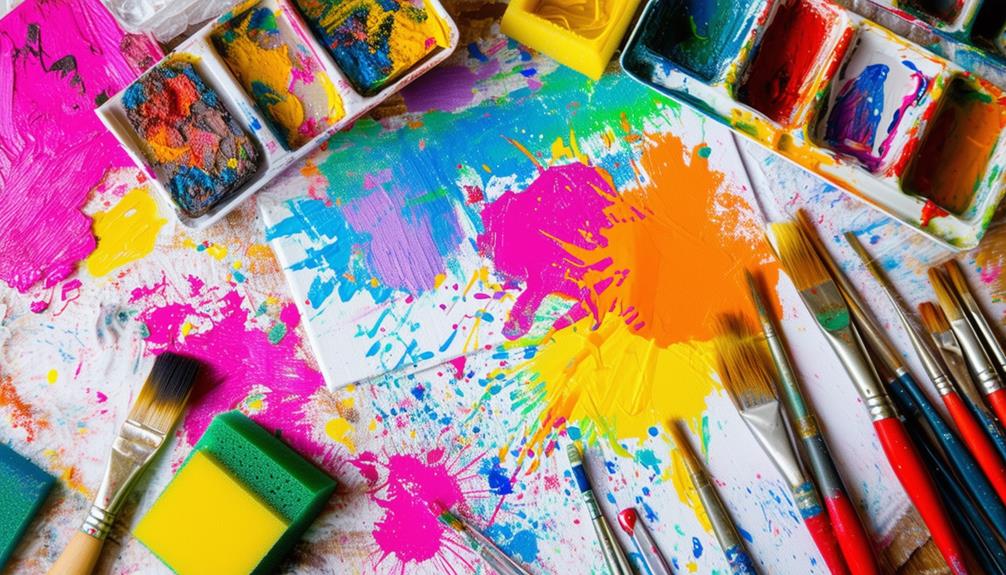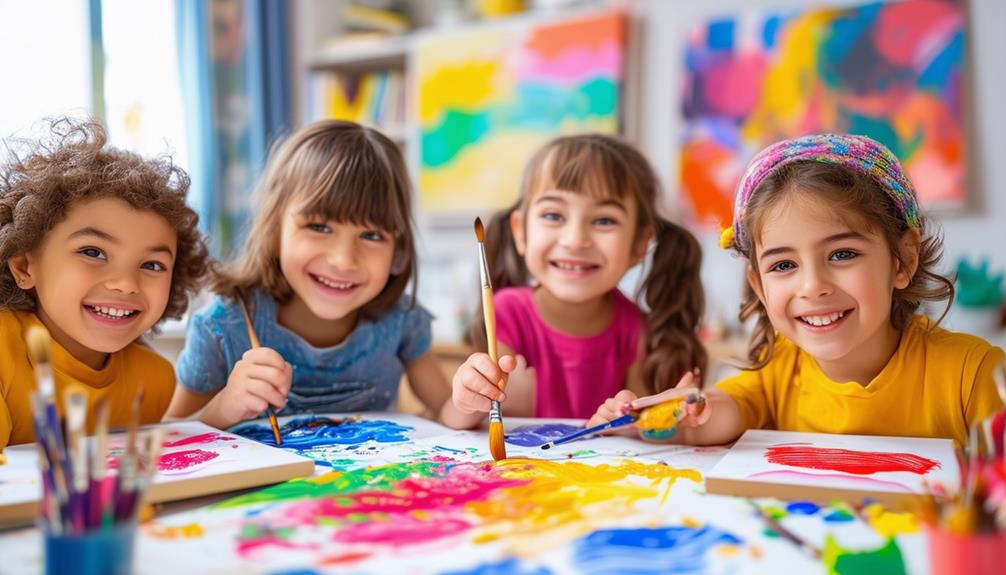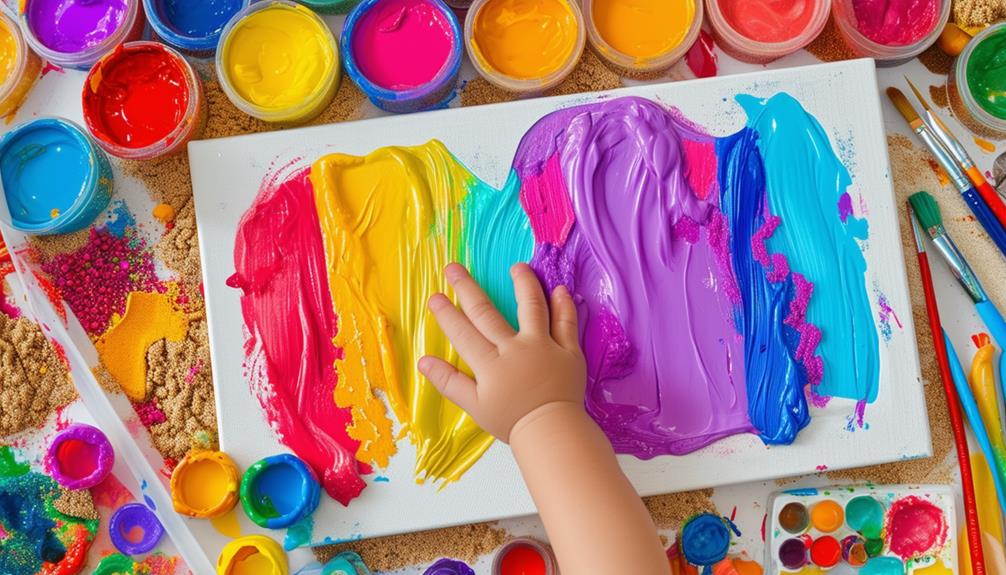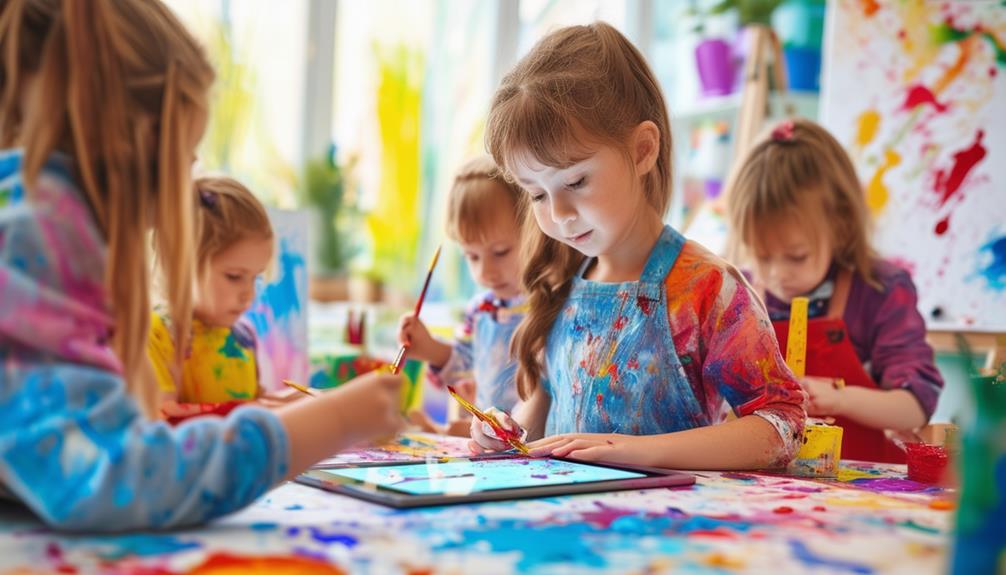Painting and Science: Mixing Colors and Experimenting
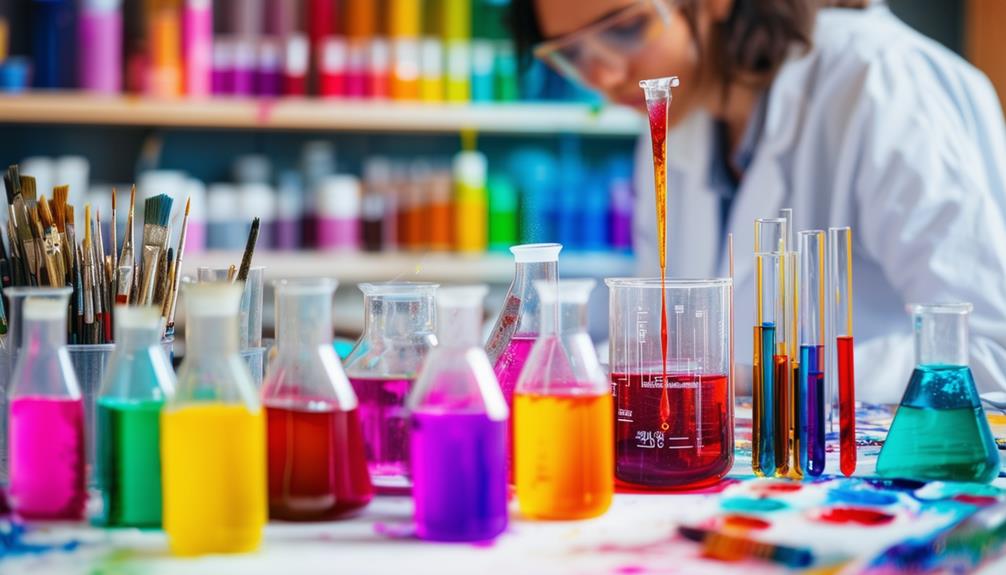
When you start mixing colors in painting, you're engaging with both art and science. Understanding how primary colors like red, yellow, and blue blend to form secondary and tertiary colors can greatly broaden your creative possibilities. By experimenting with different ratios, you can observe the fascinating nuances that emerge, adding depth to your work. But did you know there's more to this process than meets the eye? The science behind it can reveal surprising insights that might transform your approach to color. Stick around to uncover these intriguing connections and elevate your artistic skills.
Primary Colors Basics
Understanding the basics of color blending starts with recognizing that red, yellow, and blue are your primary colors; they cannot be created by mixing other colors. These primary colors form the foundation of all color blending. Whether you're engaged in an art project or a scientific investigation, mastering the use of these primary colors opens up a myriad of possibilities.
By becoming proficient with these basics, you can generate a diverse spectrum of colors. Primary colors are crucial because they combine to create secondary colors and further complex hues. Their significance in color blending makes them indispensable tools for both artists and scientists. Grasping the importance of primary colors equips you to delve deeper into color theory and experiment with various shades and tones.
In art, understanding primary colors enables the creation of vibrant and dynamic pieces. Similarly, in scientific experiments, comprehending how primary colors interact allows for predictive outcomes and a better grasp of underlying principles. Thus, before moving on to more intricate color blending techniques, ensure you are comfortable with red, yellow, and blue. This foundational knowledge will serve as the building blocks for more advanced color explorations.
Creating Secondary Colors
Now that you're familiar with primary colors, let's explore how red, yellow, and blue blend to form vibrant secondary colors like orange, green, and purple. Mixing colors is both an art and a science, and understanding the basics can enhance your painting skills.
To create secondary colors, start by combining red and yellow on your paint palette using your paintbrush. This mixture gives you a bright orange, a color crucial in many artworks. Next, try mixing yellow and blue. When these two primary colors blend, you'll get green, perfect for depicting nature and various other elements in your paintings. Finally, combining red and blue results in purple, a rich and deep secondary color that adds elegance and depth to your work.
The science behind mixing colors lies in the wavelengths of light each primary color reflects. When you blend them, new wavelengths are produced, resulting in the secondary colors. By knowing the exact color combinations and how to achieve them, you can create more dynamic and interesting pieces. So grab your paintbrushes and palette, and start experimenting to bring your artistic visions to life.
Exploring Tertiary Colors
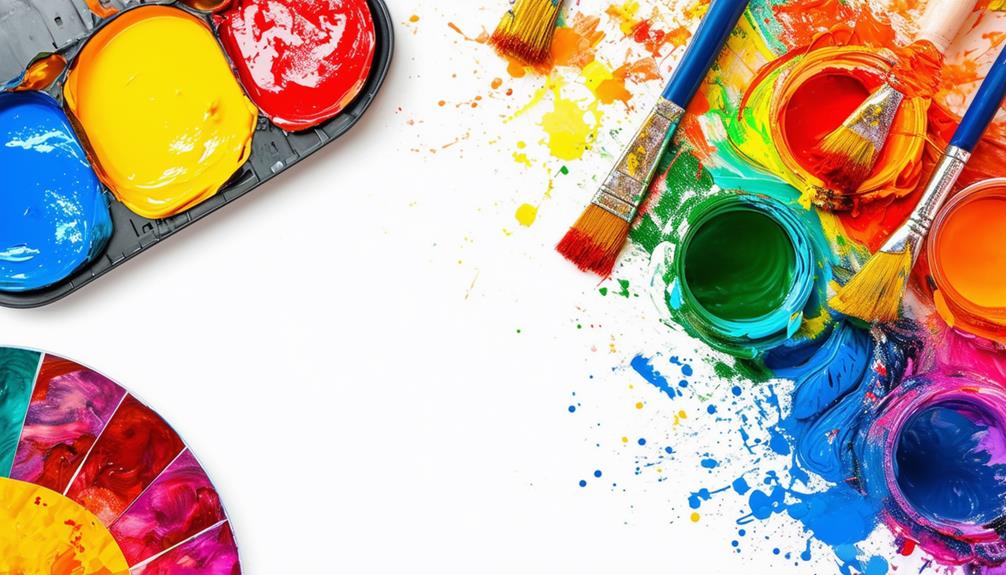
Tertiary colors emerge when you mix a primary color with a secondary color, creating hues that add depth and richness to your artwork. By understanding and experimenting with tertiary colors, you can enhance your painting skills and create more complex and alluring pieces. These colors, such as blue-green formed by mixing blue and green, offer a broader palette for creative color combinations.
In color theory, tertiary colors are essential for achieving the depth and complexity that make your art stand out. When mixing colors, consider these combinations:
- Red and Orange (Red-Orange): This creates a warm, vibrant hue perfect for adding energy to your work.
- Blue and Green (Blue-Green): This mix results in a cool, calming color that can bring tranquility to your palette.
- Yellow and Green (Yellow-Green): This combination yields a fresh, lively hue that's great for depicting nature.
Hands-On Experiments
Diving into hands-on experiments allows you to observe firsthand how primary colors blend to create a diverse array of hues. Begin with the primary colors: red, yellow, and blue. By mixing these primary colors in different proportions, you can produce secondary colors such as purple, green, and orange.
Use simple tools like paint brushes, plastic trays, and white paper to facilitate your color-mixing experiments. Observe the changes in hues when you mix colors—this is both an artistic and scientific exercise, as it demonstrates how light interacts with different pigments.
Here's a quick reference table for your experiments:
| Primary Colors | Resulting Secondary Colors |
|---|---|
| Red + Yellow | Orange |
| Yellow + Blue | Green |
| Blue + Red | Purple |
Experiment with different ratios of these primary colors to explore the myriad shades and tones you can create. For example, mixing more red than blue will yield a different shade of purple compared to mixing them in equal parts.
Reader Engagement

As you delve into color mixing, we're eager to hear about your results and experiences. Sharing your findings not only helps you reflect but also builds a vibrant community of fellow art enthusiasts. Your feedback is crucial for making these art activities more engaging and effective.
Here's how you can get involved:
- Share Your Results: Post pictures or descriptions of your color blending experiments. What colors did you create? Were there any surprising combinations?
- Offer Feedback: Tell us what worked well and what didn't. Was the activity easy to follow? How can we improve it?
- Engage with the Community: Comment on others' posts, ask questions, and provide suggestions. Your interaction can inspire and guide others in their artistic journey.
Consider the benefits and challenges of integrating science into your art. Did experimenting with colors enhance your understanding of both art and science? What difficulties did you encounter, and how did you overcome them?

